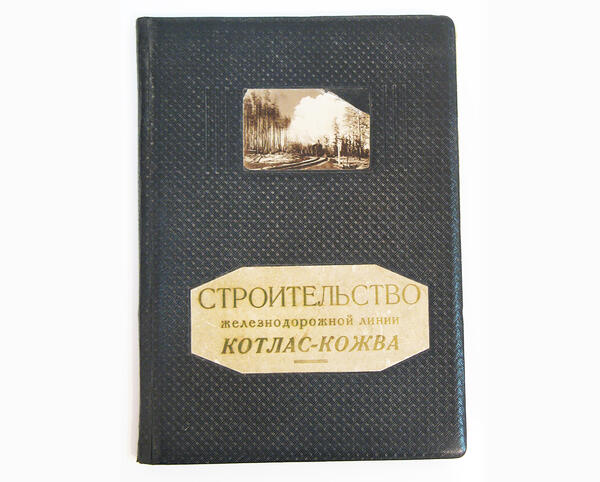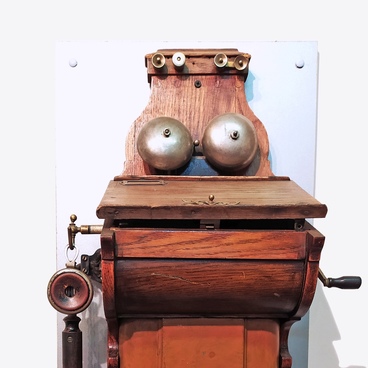The book ‘Construction of the Kotlas to Kózhva Railway Line’ is an essay on the history of road construction and the economy of the region. 70 numbered copies of the book were printed and circulated by the printing house of the North-Dvínsky Building in the village of Zheleznodorózhny (now the city of Émva). The museum has copy number 58, and the degree of preservation of such a rare book, published in 1942, is quite impressive. Isaak Urálov, a member of the Communist Party, who worked on the construction of the highway from 1938 to 1945 and headed the Úrdom branch of the railway, donated the book to the Kótlas Museum of Local Lore.
The Kótlas to Kózhva railway, which was part of the Kónosha-Kózhva-Vorkutá line, was built mainly by forced labor of prisoners from the Northern railway camp of the NKVD, specially created for this purpose. The construction was accompanied by an acute shortage of resources and high mortality from accidents, starvation, and progressive weakness among the workers.
Sections of the new road were put into operation gradually, and they were immediately used for their intended purpose, combining rail and river transport to speed up the progress of production. In spite of everything, the track was laid in the shortest possible time and was able to be put into operation during wartime: 20.2 km of access railway tracks to the piers were built in 1938-1940.
This book is a valuable historical source of information on the industrial development of the North. Its content includes several sections: the construction of the North Pechóra highway, flora and fauna of the territory near the highway, soil and building materials, mechanization of construction and installation work, logging, agriculture and more. There is also a schematic map of the constructed highway and the mineral resources of the Autonomous Republic of Kómi.
An interesting section of the book relays how the workers of the northern railway camp developed a huge amount of invention and innovation due to their effort, their diverse nature, and the difficult conditions in which they worked. An equally important chapter involves the description of bridge construction work with a chronic shortage of building materials during the war period. Reading between the lines, the message is one of titanic labor and massive heroism on the part of the highway builders.
The Kótlas to Kózhva railway, which was part of the Kónosha-Kózhva-Vorkutá line, was built mainly by forced labor of prisoners from the Northern railway camp of the NKVD, specially created for this purpose. The construction was accompanied by an acute shortage of resources and high mortality from accidents, starvation, and progressive weakness among the workers.
Sections of the new road were put into operation gradually, and they were immediately used for their intended purpose, combining rail and river transport to speed up the progress of production. In spite of everything, the track was laid in the shortest possible time and was able to be put into operation during wartime: 20.2 km of access railway tracks to the piers were built in 1938-1940.
This book is a valuable historical source of information on the industrial development of the North. Its content includes several sections: the construction of the North Pechóra highway, flora and fauna of the territory near the highway, soil and building materials, mechanization of construction and installation work, logging, agriculture and more. There is also a schematic map of the constructed highway and the mineral resources of the Autonomous Republic of Kómi.
An interesting section of the book relays how the workers of the northern railway camp developed a huge amount of invention and innovation due to their effort, their diverse nature, and the difficult conditions in which they worked. An equally important chapter involves the description of bridge construction work with a chronic shortage of building materials during the war period. Reading between the lines, the message is one of titanic labor and massive heroism on the part of the highway builders.


